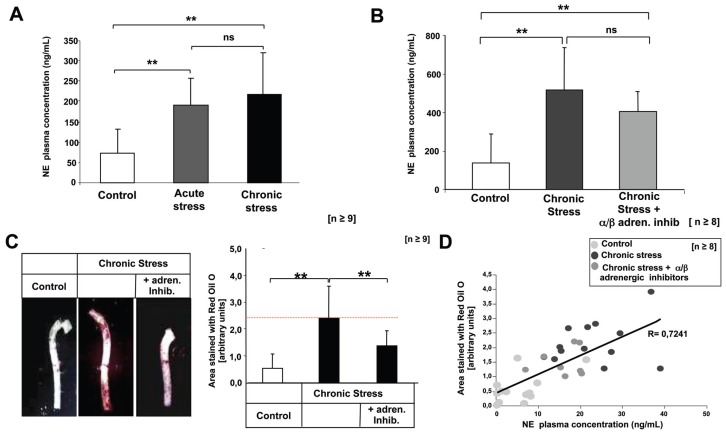Figure 1.
Exposure to chronic stress and subsequent catecholamine release leads to the formation of atherosclerotic lesions. (A) Plasma NE levels in ApoE−/− mice left untreated or subjected to acute or repeated stress. Statistically significant differences are indicated (**p < 0.01). (B) Plasma NE levels in ApoE−/− mice either left untreated or subjected to repeated stress. Where indicated mice received a combination of α-adrenergic and β-adrenergic receptor antagonists. Statistically significant differences are indicated (**p < 0.01). (C) ApoE−/− mice were exposed to repeated stress episodes as described in methods. Representative aortae stained with oil red O and quantification of positive covered are shown. Aortic tissue was evaluated by one investigator blinded for the identities of the experimental groups. Statistically significant differences are indicated (**p < 0.01). Data represent the mean ± SD (n ≥ 8). (D) Diagram showing correlation analysis performed between NE plasma levels and oil red O staining intensity using Spearman rank correlation.

